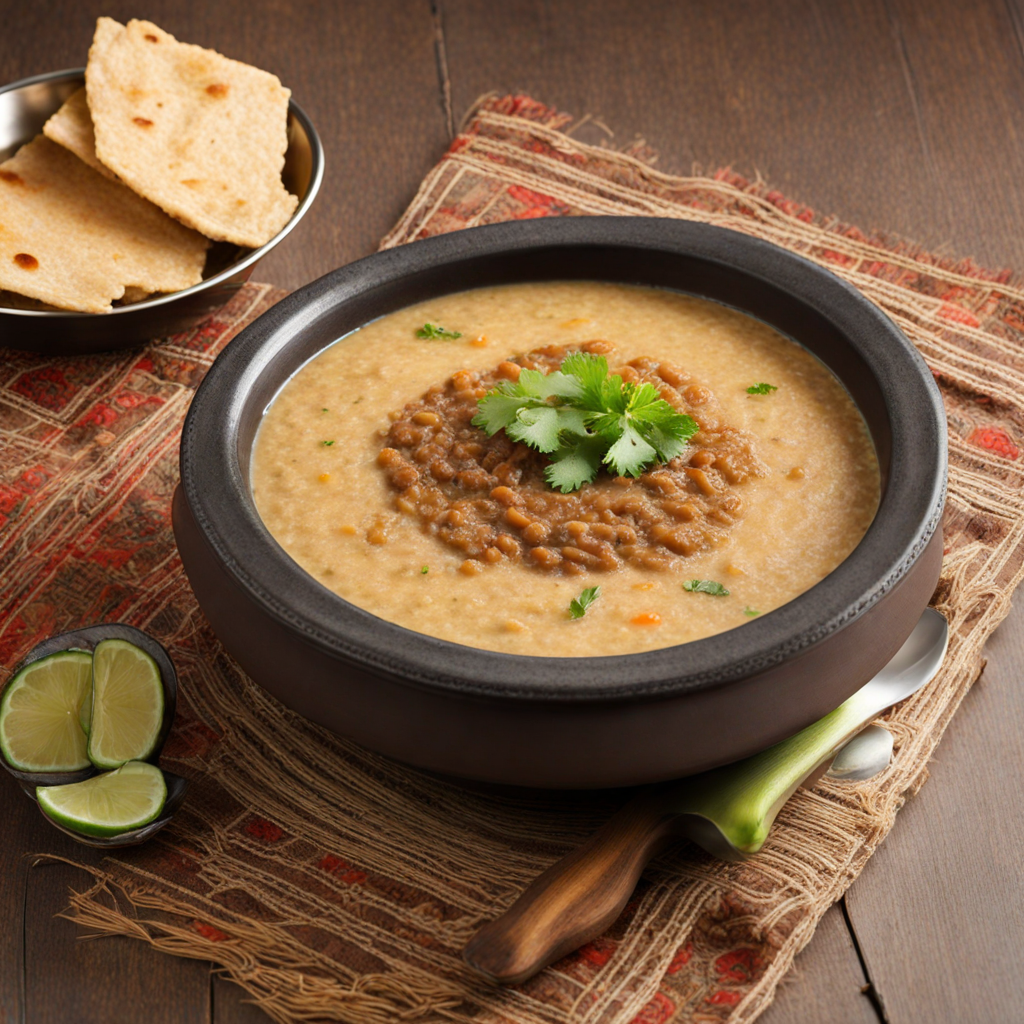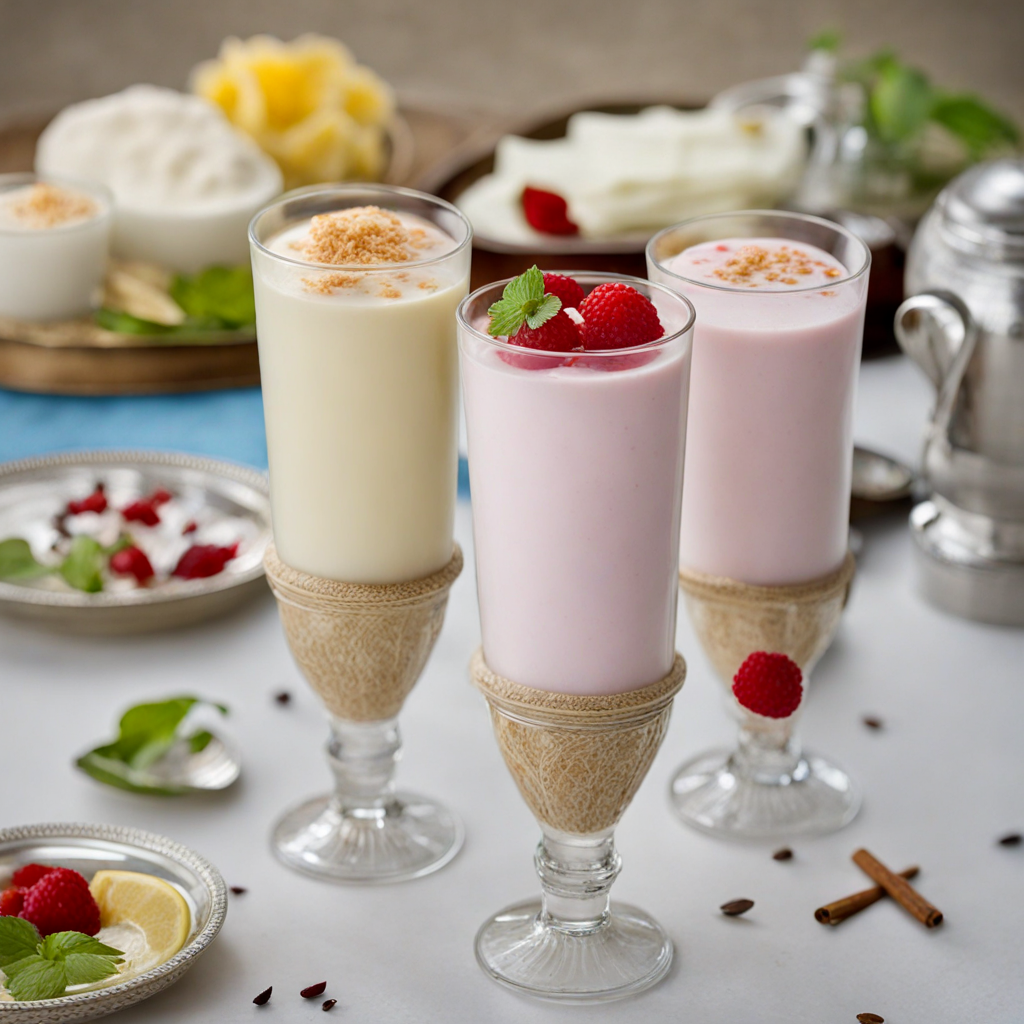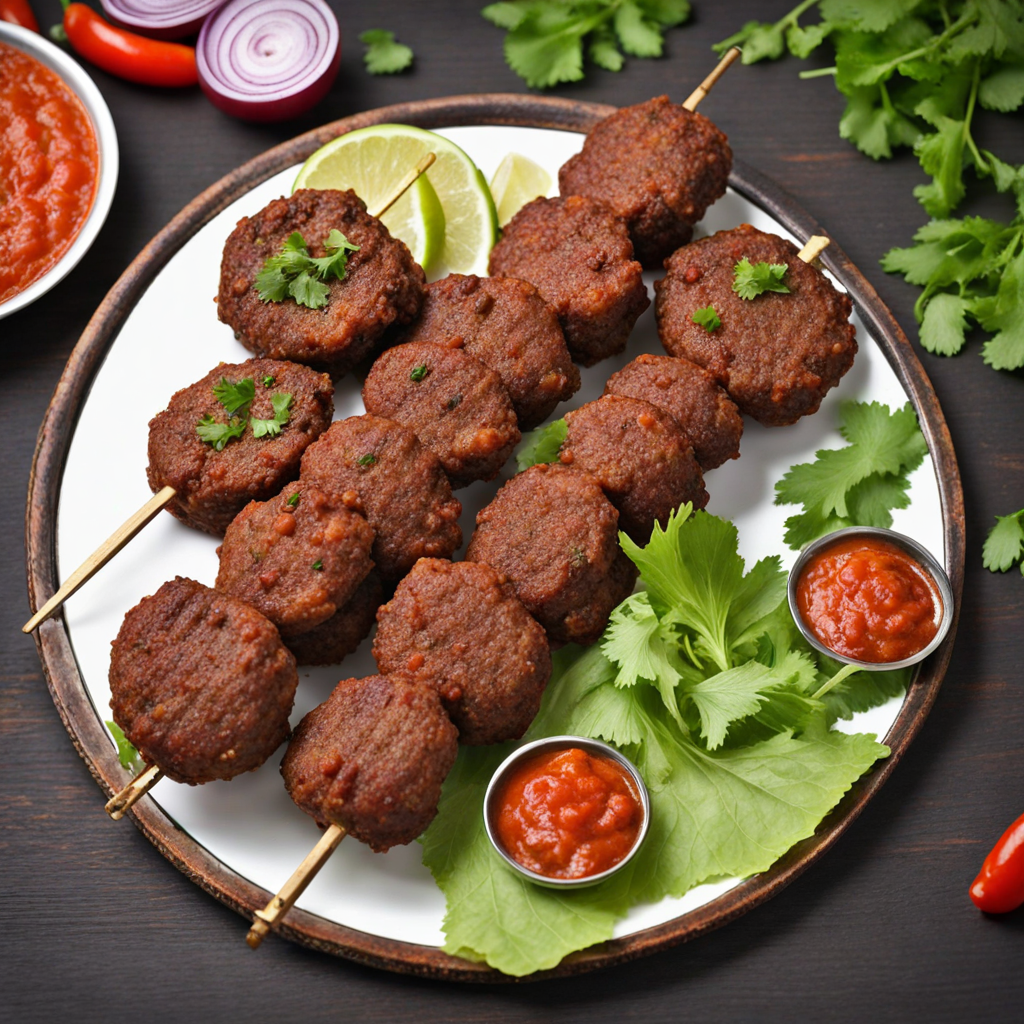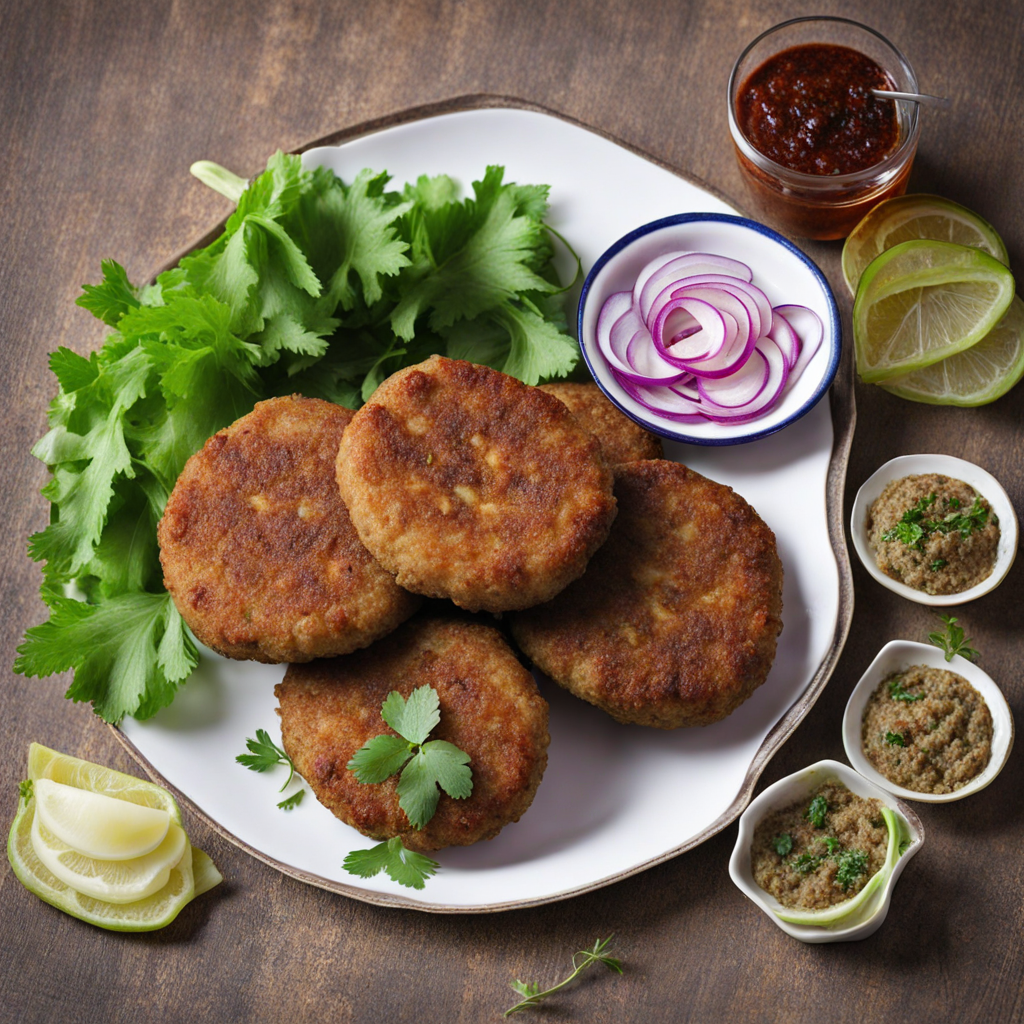Ras Malai
Ras Malai is a delightful dessert that hails from the Indian subcontinent, with a special place in the hearts of many in Pakistan. This dish features soft, spongy cheese dumplings called 'chenna' or 'paneer,' which are delicately simmered in a sweet, creamy milk sauce flavored with cardamom and often enhanced by a hint of saffron. The texture of the dumplings is incredibly light, almost cloud-like, allowing them to soak up the rich milk syrup and create a wonderfully indulgent experience for the palate. When served, Ras Malai is typically garnished with slivers of almonds and pistachios, adding a pleasant crunch and a visual appeal that enhances the overall presentation. The contrasting textures of the smooth, creamy milk and the tender cheese balls create a harmonious balance that is both refreshing and satisfying. The infusion of cardamom offers a warm, aromatic quality, while the sweetness of the dish is perfectly balanced, making it an ideal ending to any meal. Enjoying Ras Malai is not just about tasting a dessert; it's about experiencing a rich cultural tradition. Often served during special occasions and celebrations, this dish evokes a sense of warmth and togetherness. Whether enjoyed at a festive gathering or as a simple indulgence at home, Ras Malai is a must-try for anyone looking to explore the exquisite flavors of Pakistani cuisine, promising a delightful journey of taste that lingers long after the last bite.
How It Became This Dish
The Sweet Legacy of Ras Malai: A Culinary Journey from India to Pakistan #### Origins and Historical Context Ras Malai, a delectable dessert that has become a beloved part of Pakistani cuisine, has its origins deeply rooted in the Indian subcontinent. This sweet treat is believed to have emerged from the eastern regions of India, particularly Bengal, during the Mughal era in the 16th century. The Mughals, known for their extravagant feasts and elaborate culinary traditions, played a crucial role in the development of many iconic dishes, including those that involve dairy. The term "Ras Malai" can be broken down into two parts: "Ras," meaning juice or essence, and "Malai," which refers to cream. The dish typically consists of soft, spongy cheese balls—known as "chhena"—soaked in a rich, sweetened milk sauce flavored with cardamom and garnished with slivers of pistachio or almonds. The contrast between the creamy texture and the fragrant syrup creates a unique sensory experience that has delighted palates for centuries. #### Cultural Significance Ras Malai is more than just a dessert; it is a symbol of celebration and hospitality in South Asian cultures. In Pakistan, it is often served during special occasions, such as weddings, religious festivals, and family gatherings. The dish embodies the spirit of sharing and community, as it is traditionally offered to guests as a gesture of goodwill. The preparation of Ras Malai is considered an art form, with families often passing down their secret recipes through generations. Each household may have its own variations, reflecting regional preferences and personal touches. This customization showcases the adaptability of Ras Malai and its ability to connect people through food. The dessert also holds a significant place in the culinary identity of Pakistan, highlighting the influence of Indian cuisine on Pakistani gastronomy. After the partition of India in 1947, many culinary traditions crossed borders, and Ras Malai became a staple in Pakistani sweet shops and households alike. It serves as a reminder of shared histories while also celebrating the unique cultural evolution within Pakistan. #### Ingredients and Preparation The fundamental ingredients of Ras Malai are relatively simple: milk, sugar, and cardamom. The process begins with boiling full-fat milk to create chhena, a fresh cheese made by curdling the milk with lemon juice or vinegar. Once the curds have formed, they are drained and kneaded into a smooth dough before being shaped into small balls. These cheese balls are then cooked in a light sugar syrup until they puff up and absorb the sweetness. The milk sauce, or "malai," is prepared by simmering milk until it thickens and reduces, then sweetened with sugar and infused with cardamom. The cooked cheese balls are gently immersed in this rich, creamy sauce, allowing them to soak up the flavors. Traditionally, Ras Malai is served chilled, enhancing its refreshing qualities, especially in the hot summer months. #### Evolution Over Time As Ras Malai traveled through time and across regions, it underwent various transformations. In Pakistan, the dessert has adapted to local tastes and preferences, leading to the emergence of several variations. For instance, some recipes incorporate saffron for added flavor and color, while others may use different types of nuts or even flavored syrups. In urban centers like Karachi and Lahore, Ras Malai has found its place in contemporary dessert culture. Modern interpretations often include fusion elements, such as the incorporation of chocolate or fruit flavors. Innovative chefs and home cooks alike experiment with textures and presentations, transforming the traditional dish into a more avant-garde culinary experience. The rise of social media and food blogs has also played a crucial role in popularizing Ras Malai beyond traditional settings. Pictures of beautifully plated Ras Malai, often adorned with vibrant garnishes, have flooded platforms like Instagram, attracting a younger audience eager to explore their culinary heritage. This digital age has revived interest in classic dishes, encouraging families to rediscover and recreate their ancestral recipes. Moreover, Ras Malai has become a staple in Pakistani dessert parlors and sweet shops, where it is often served alongside other traditional sweets like Gulab Jamun and Jalebi. The competitive nature of the sweets market has led to an increased emphasis on quality and presentation, with artisans striving to perfect their recipes to stand out. #### Globalization and Ras Malai As the diaspora of South Asians expanded across the globe, so did the popularity of Ras Malai. In countries like the United States, Canada, and the United Kingdom, Ras Malai has found its way into diverse communities and has become a beloved dessert at Indian and Pakistani restaurants. The dish is often featured at cultural festivals and events, celebrating South Asian heritage and culinary traditions. The globalization of Ras Malai has also led to the creation of ready-to-eat versions available in supermarkets, making it accessible to a wider audience. While this convenience may appeal to many, some purists argue that nothing compares to the homemade version, which carries the love and tradition of family recipes. #### Conclusion Ras Malai is more than just a sweet treat; it is a testament to the rich culinary history of the Indian subcontinent and a symbol of cultural identity and community. Its journey from the kitchens of Bengal to the vibrant sweet shops of Pakistan illustrates the adaptability and enduring appeal of this classic dessert. As it continues to evolve and inspire new generations of food lovers, Ras Malai remains a cherished part of both Pakistani and broader South Asian culinary traditions. Whether served at weddings, festivals, or simply enjoyed at home, Ras Malai invites us to celebrate the sweetness of life, connection, and the stories that food can tell. As we savor each creamy bite, we partake in a legacy that transcends borders and brings people together, one delectable spoonful at a time.
You may like
Discover local flavors from Pakistan






